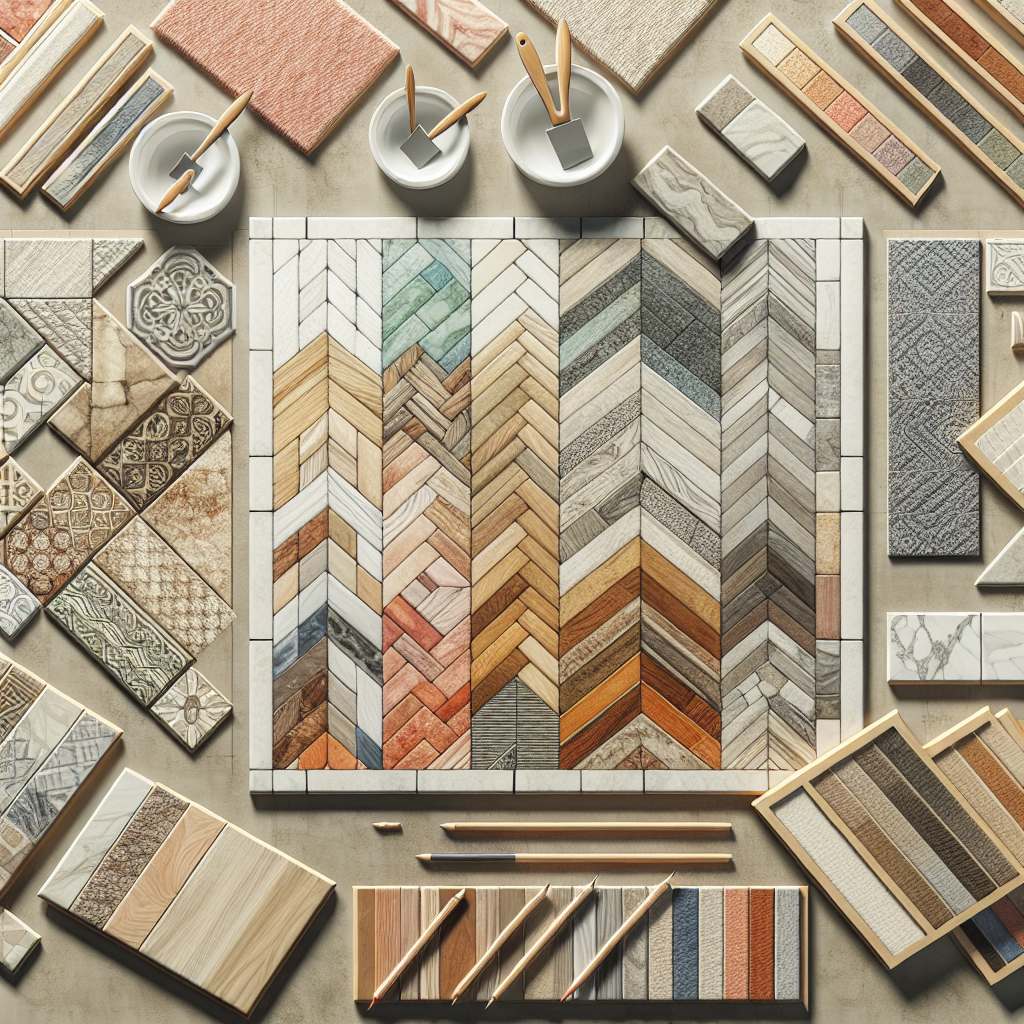When it comes to interior design, flooring is often an overlooked aspect. Yet, it can make a powerful statement and set the tone for the entire space. By incorporating patterns and textures into your flooring choices, you can elevate a room’s aesthetic while expressing your personality. In this article, we’ll explore how to use these elements effectively, ensuring your floors become a focal point that enhances your home.
Understanding Patterns in Flooring
Patterns can be your best friend when it comes to creating dynamic and engaging spaces. Here’s how to choose the right patterns for your flooring:
1. Bold Geometric Designs
Geometric patterns are a trendy choice for modern homes. Whether you opt for sharp lines or soft curves, bold geometric floors can serve as stunning conversation starters. Consider black and white tiles for a classic look, or incorporate colorful shapes to inject a fun, contemporary vibe into your space.
2. Classic Herringbone and Chevron
If you prefer a more timeless feel, herringbone and chevron patterns are excellent choices. These patterns work beautifully with hardwood and tile and can add depth and elegance to both large and small rooms. They naturally draw the eye and create movement within the space.
3. Vintage and Retro Patterns
For those who love a touch of nostalgia, vintage and retro patterns can transform your floors into a work of art. From intricate Victorian tiles to funky 70s linoleum, these styles can add character and charm. Visit local antique shops or check out reclaimed materials to find unique pieces for your project.
The Role of Texture in Flooring Choices
Texture is a crucial factor that influences both the visual and tactile experience of a room. Let’s delve into how to integrate various textures into your flooring decisions.
1. Smooth vs. Rough Surfaces
Decide how you want the flooring to feel underfoot. Smooth surfaces, like polished concrete or sleek hardwood, give a contemporary touch, while rougher textures, such as reclaimed wood or rustic stone, bring warmth and a connection to nature. Consider the purpose of the space—smooth textures are often better for modern offices, while rough textures can add comfort to living rooms or bedrooms.
2. Tactile Contrast
Combining different textures creates a rich experience that can enhance your space significantly. For example, mixing a plush area rug with sleek hardwood flooring can delineate areas within an open-concept home while providing comfort. You could also experiment with tile finishes—glossy surfaces paired with matte tiles can create a visually striking contrast.
Choosing the Right Material
Different materials provide various textures and patterns that can cater to your design needs. Here are a few popular options:
1. Wood
Wood flooring offers a classic and versatile option. It can be stained in various colors, featuring different grains that produce unique textures. Pattern your hardwood with a herringbone or chevron design to bring in a contemporary twist.
2. Tile
Ceramic and porcelain tiles come in an array of beautiful patterns and textures. Whether you’re aiming for a Mediterranean feel or a minimalist approach, tiles can provide durable and stylish flooring.
3. Carpet
Carpets can introduce softness and warmth to any space. Loop pile carpets come with intriguing textures, and cut pile options offer a level of comfort that’s hard to beat. Ensure the patterns complement your overall design rather than overwhelm the space.
Integrating Patterns and Textures Flowingly
One of the fundamental rules in interior design is cohesion. While you may want to experiment with various patterns and textures, it’s essential to integrate them seamlessly. Here are some strategies for achieving a coherent look:
1. Color Palette
Establish a core color palette that ties your flooring to other elements in the room. This ensures that even if your flooring has a bold pattern, it remains part of a harmonious whole.
2. Focal Points
Use patterns to create focal points in your home. A boldly patterned entryway can lead into a more subdued hallway, directing attention and dividing the space naturally.
3. Layering Textures
Don’t hesitate to layer textures. A rug can soften a hard surface and add warmth, while visually contrasting patterns can bring depth and interest to the room. Consider how these layers interact to avoid a cluttered look.
Conclusion: Let Your Floors Speak for You
When it comes to flooring, the possibilities are endless. By embracing patterns and textures, you can create stunning visuals that reflect your style and elevate your home’s ambiance. Remember to balance cohesion with creativity, and let your flooring choices tell your design story.
Creating a home that feels uniquely yours starts from the ground up—so why not make it beautiful? As you embark on your flooring journey, don’t shy away from experimenting; let your floors become a canvas for your creativity!


